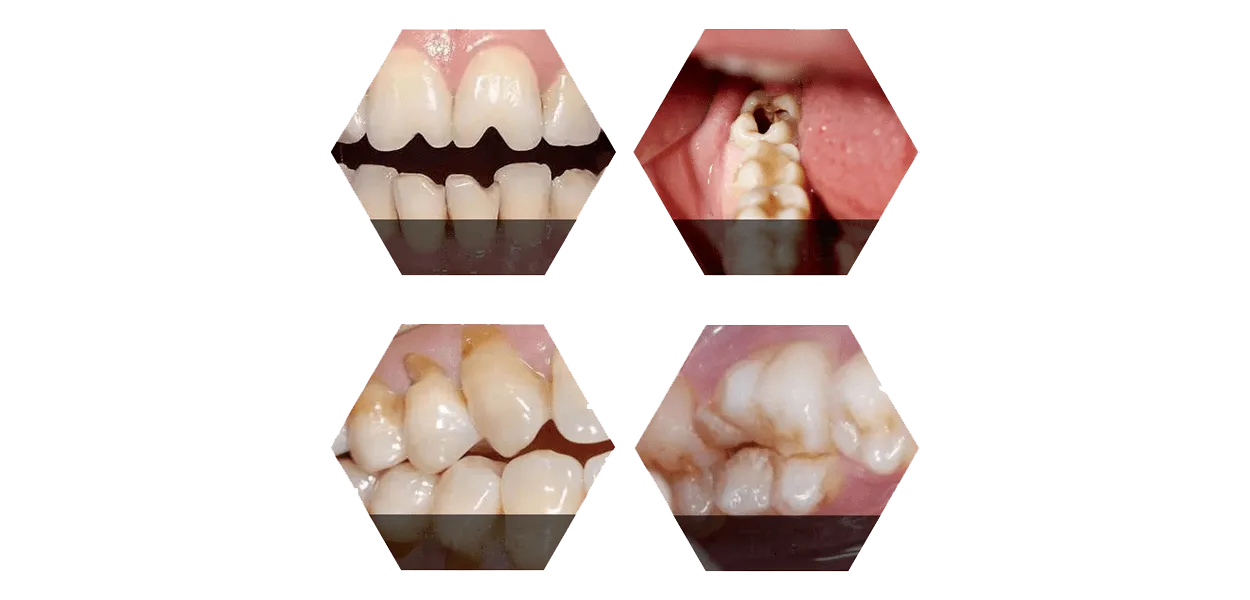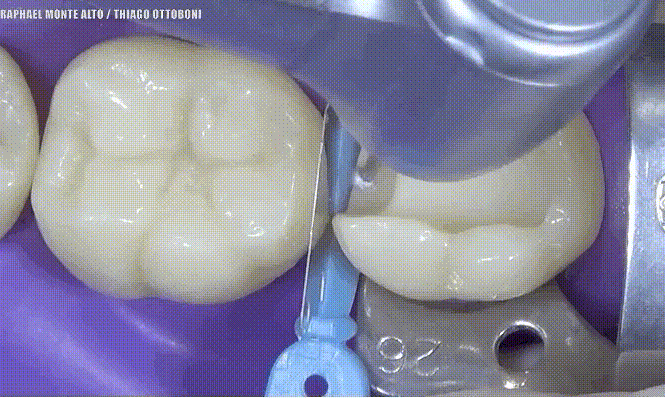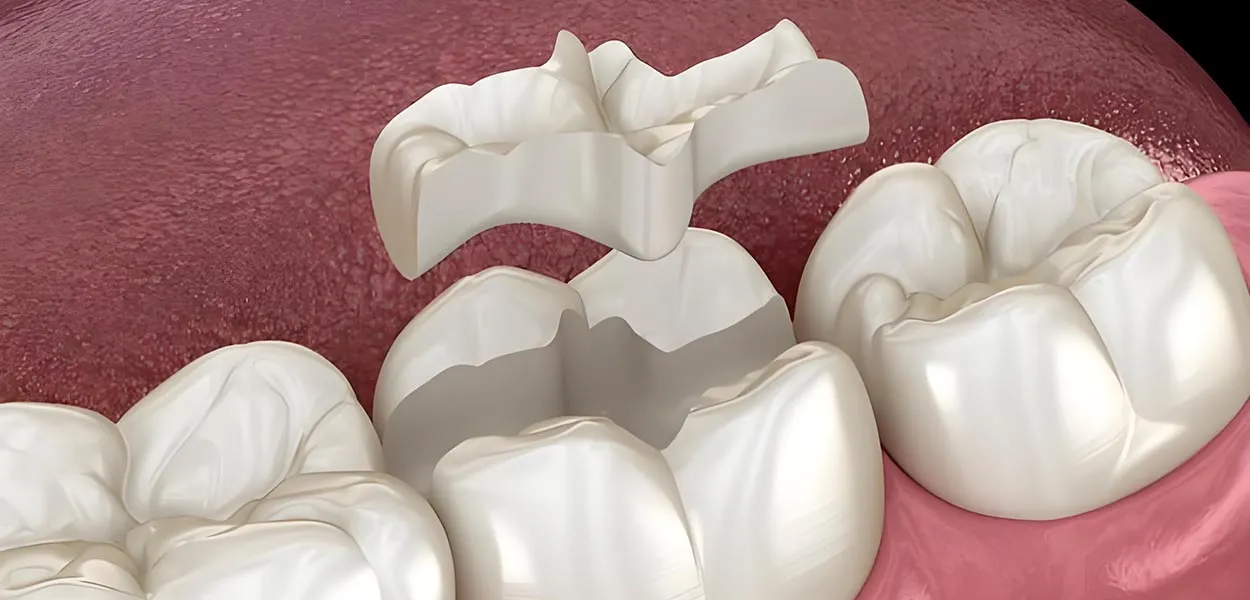Dental fillings are to restore the appearance and function of the tooth through filling materials when the tooth tissue is defective for various reasons. It is a common dental treatment, which can effectively eliminate the clinical symptoms caused by tooth tissue defects, keep the teeth healthy, and help to prolong the life of the teeth.
1. The Need for Dental Fillings
As the saying goes, “If you don’t fill a small hole, you’ll suffer for a big one”. We covered dental caries in detail in an earlier article. In the prometaphase of caries, when the cavity is very small and just breaks through the dentin. It seems to have little effect by caries at this time, and then most people don’t understand the price of fillings, they think it’s unnecessary to spend this money.This kind of thinking will lead to caries continue to develop until it reaches the pulp, which will be accompanied by severe toothache, and then fillings will not only be more expensive, but also the effect is not as good as it was at the beginning.
Even if a tooth is missing that is not caused by caries, it is more likely to develop caries if it is not filled than if it is intact. The bad teeth can also cause chewing function to decline due to excessive wear and tear, affecting the body’s ability to absorb nutrients. If the bite of a broken tooth is not aligned correctly, it will chew on one side for a long time, leading to facial asymmetry.
Dental fillings can interrupt the decay process, prevent further expansion of the cavity, and improve tooth sensitivity and toothache. Fillings restore the occlusal position of the teeth and normal chewing function, ensuring normal digestive function and nutrient absorption in the body.

2. When Do I Need Dental Fillings?
The tooth itself has no restorative ability, and tooth injuries, chips, and cavities can only be repaired with fillings. Timely restoration can restore the beauty of the tooth and chewing efficiency.
The following situations all need to go to the dentist in time for dental fillings:
- Dental caries: teeth can be filled when they are missing because of cavities. If the caries only spread to the enamel layer, dentin layer can be conservative filling. However, if the caries is severe and spreads to the pulp, causing pulpal inflammation and apical inflammation, root canal treatment is needed before dental filling.
- Severe tooth wear: Both maxillofacial wear and tooth cervical wear need to be filled as soon as possible because worn teeth are more susceptible to caries, and severely worn teeth will affect chewing function.
- Chipped teeth due to trauma: Teeth that have suffered trauma resulting in chipped enamel and chipped crowns can also be filled to restore the appearance of the tooth and normal bite, while eliminating symptoms.
3. The Process and Steps of Getting a Dental Filling
Dental fillings are usually made in several steps, including cavity preparation, disinfection, filling of the filling material, light curing, polishing and removal of debris.
Cavity preparation:
The cavity is first made by thoroughly removing the decayed tooth tissue with a dental drill. This ensures that the filling material is firmly bonded to the tooth and also prevents reoccurrence of tooth decay.

Disinfecting and applying bonding agent:
In the previous step of making the cavity, even though the infection in the tooth has been removed, there will still be bacteria left behind. If not disinfected or incompletely disinfected will allow the residual bacteria to continue to multiply, and after a certain point it will lead to caries to come back again. After adequate disinfection, it is necessary to apply a layer of adhesive in the cavity to prepare for the filling material later.
Filling of the filling material:
A malleable resin material (a bit like plasticine) is filled into the prepared cavity using dental wedges and matrix bands to create the initial shape of the tooth.
Light curing:
The filling material is irradiated with a specific curing light. It reacts to being exposed to this specific wavelength of light, rapidly hardening and increasing in strength.
Polishing:
Utilizing tools such as prophy brushes and prophy cups, the filled tooth is finely polished to restore its shape and shine.
Removal of debris:
The filling is completed when the mouth is cleaned of debris from the filling process.

4. Permanent Tooth Fillings Material
Dental fillings vary greatly in price, not only related to the complexity of the dental fillings surgery operation, but also with the filling materials. So the face of many filling materials how to choose? Is the more expensive the better? This is not necessarily, it is recommended to communicate with the dentist, according to their own dental conditions and affordability to choose the most suitable for their own filling materials.
Currently, the clinical commonly used filling materials and the advantages and disadvantages:
| Material | Advantages | Disadvantages |
|---|---|---|
| Silver amalgam | Cheap and affordable, high strength, wear-resistant, corrosion-resistant, long service life, is the traditional filling material for posterior alveolar teeth. | Poor aesthetics, does not match the color of natural teeth, and is highly irritating to the dental pulp. |
| Glass ions | Slow release of fluoride ions, can prevent caries to a certain extent | Low compressive strength, low hardness, easy to wear and tear |
| Composite resin | Easily bonded with the tooth, similar in color to the tooth, natural and beautiful after restoration | Not as strong as silver amalgam |
| Nano-resin | Has milky color, better realism than composite resin, more natural, more wear-resistant | More expensive |
| Porcelain inlay implantation | More delicate fabrication, best bonding with the tooth, can avoid tooth re-decay as much as possible. Stronger and more durable than resin materials | Very expensive |

5. Do Fillings Look Like Normal Teeth?
In general, do fillings look like normal teeth depends on a variety of factors. Including, but not limited to, the material of the filling, the degree of damage to the tooth, and the restoration process will all affect the results. If the fillings material similar in color to the normal tooth (such as the aforementioned nano resin) is used for the restoration, the damage is small, and the restoration process is fine, the tooth will be almost the same as the true tooth. However, if the material of a different color is used or if there is more damage, there may be a difference in color.
It is suggested to consult a professional dentist for an accurate answer based on the actual condition of your teeth.
| Material type | Price range (USD/pc) | Features |
|---|---|---|
| Glass ionomer | 50-150 | Contains fluoride to prevent caries, good adhesion, but weak abrasion resistance, suitable for children’s milk teeth or temporary restorations |
| Composite resin | 200-300 | The color is close to real teeth, suitable for aesthetic restoration of anterior teeth; posterior teeth need to choose high-strength resin, slightly higher price |
| Nano Resin | 400-600 | More delicate polishing effect, strong wear resistance, occlusal surface restoration effect is more durable |
| Porcelain inlays | 3000 or above | More delicate production, high bonding with the tooth, long service life, up to 10 years or more |
6. Precautions After Dental Fillings
| Item | Notes |
|---|---|
| Diet | Avoid eating within 2 hours, and do not chew hard foods on the restored side for 24 hours; reduce intake of staining foods (such as coffee and strong tea) within 1 week. |
| Cleaning | Use a soft-bristled toothbrush and gently brush the restoration area; use fluoride toothpaste to prevent marginal decay. |
| Handling Abnormal Situations | If persistent pain, material detachment, or noticeable darkening of edges occurs, seek a follow-up appointment promptly. |


